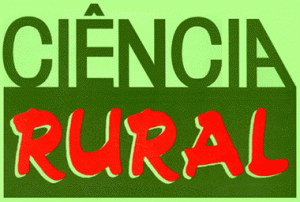Maria Luiza De Grandi, journalist from Ciência Rural, Santa Maria, RS, Brazil.
Emanuela Forestieri da Gama-Rodrigues, Associate Professor of Universidade Estadual do Norte Fluminense, Campos dos Goytacazes, RJ, Brasil.
 The Atlantic Forest covers an area of 100 to 120 million hectares, with only 12.5% of its original forests. In the state of Rio de Janeiro, due to the intensive cultivation of sugarcane, the rates of original forests are even lower. After the decline of these cultures, the cultivated areas were replaced by pastures.
The Atlantic Forest covers an area of 100 to 120 million hectares, with only 12.5% of its original forests. In the state of Rio de Janeiro, due to the intensive cultivation of sugarcane, the rates of original forests are even lower. After the decline of these cultures, the cultivated areas were replaced by pastures.
In a recent study, researchers from the Instituto Federal Goiano-Campus Morrinhos (IF Goiano), in partnership with researchers from Universidade Estadual do Norte Fluminense Darcy Ribeiro (UENF) and Universidade Estadual do Sudoeste da Bahia (UESB), evaluated the levels of carbon lability soil organic matter after conversion of pasture to leguminous trees and the influence of soil depth on carbon lability. The results were published in the article Oxidizable fractions of carbon in soils under nitrogen-fixing forest legumes in degraded pastures, in Ciência Rural (vol. 52, nº 12).
C lability is related to the accessibility of organic compounds by soil microbiota. Thus, labile C is a compound that presents a fast cycling rate and, therefore, is more easily mineralized by microorganisms. On the contrary, the recalcitrant C is the one that presents a low cycling rate. To achieve the results, the researchers used the technique of chemical fractionation of carbon (C) by an increasing oxidation gradient. The samples were collected in an experiment in the area of the Carrapeta farm, Conceição de Macabú, in the state of Rio de Janeiro. The study was carried out with an unfertilized pasture and revegetated with plantations of Acacia auriculiformis A. Cunn leguminous trees. ex Benth., Mimosa caesalpiniifolia Benth. and Inga edulis Mart. Both were 13 year old plantations.
The main results found in the research show that the conversion of degraded pastures into forest legumes and soil depth promoted changes in the chemical composition of C. “Through the levels of C lability it is possible to infer whether the C present in a given management system it is more accessible to the soil microbiota and, therefore, can be released in the form of CO2 or if it is in a more stable form and, therefore, can be preserved for a longer time in the soil”, explains researcher Emanuela Forestieri Gama-Rodrigues.
The research brings innovations in relation to other research in the area, such as the possibility of studying organic C in its different levels of lability. “When the variation in soil organic matter content is based only on soil organic C content (quantification of soil organic C by the method of wet oxidation with only a single concentration of H2SO4), changes due to land use and of handling techniques may not be detectable, while the response of the most active fractions may occur much more quickly”, adds Gama-Rodrigues.
In practice, through the levels of C lability it is possible to infer whether the C present in a given management system is more accessible to the soil microbiota and, therefore, can be released in the form of CO2 or if it is in a more stable form and, therefore, thus, it can be preserved longer in the soil. “Lability is important in the context of our article, as it shows the influence of the litter produced by different vegetation coverings in the formation of C compounds of different chemical compositions.”, concludes Emanuela.
References
BLAIR, G.J., et al. Soil carbon fractions based on their degree of oxidation, and the development of a carbon management index for agricultural systems. Australian Journal of Soil Research [online]. 1995, vol. 46, pp. 1459-1466 [viewed 25 April 2023]. https://doi.org/10.1071/AR9951459. Available from: https://www.publish.csiro.au/cp/AR9951459
To read the article, access
FAUSTINO, L.L., et al. Oxidizable fractions of carbon in soils under nitrogen-fixing forest legumes in degraded pastures. Cienc. Rural [online]. 2022, vol. 52, no. 12, e20210488 [viewed 25 April 2023]. https://doi.org/10.1590/0103-8478cr20210488. Available from: https://www.scielo.br/j/cr/a/RcgbDYz4WDZxstk8DZRhrSm/
External links
Ciência Rural – CR: https://www.scielo.br/cr/
Ciência Rural – Website: http://coral.ufsm.br/ccr/cienciarural/
Ciência Rural – Social media: Twitter | Facebook | Instagram
Como citar este post [ISO 690/2010]:














Recent Comments